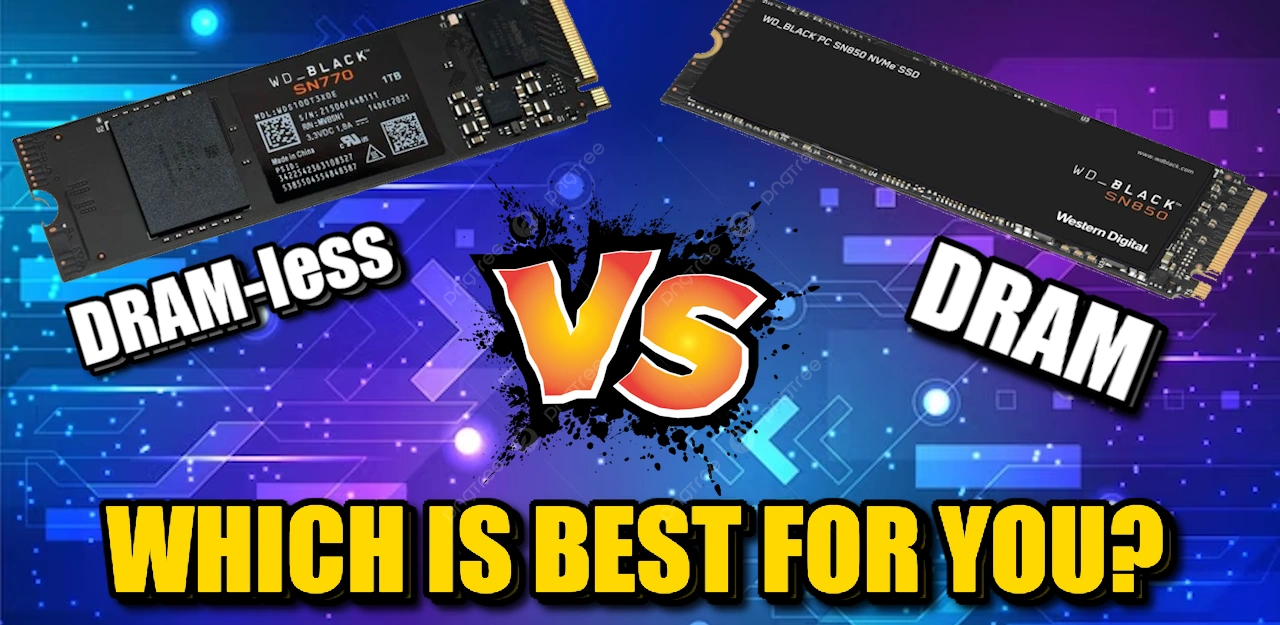Are DRAM free SSDs Worth Your Money and Your Data?
Solid-State Drives (SSDs) have revolutionized data storage with their speed and reliability. Among these, DRAMless SSDs have carved a niche, offering unique advantages and disadvantages. With the emergence of models like the Samsung 990 EVO, the Phison E31T controller-based SSDs, and the WD Black SN770, the landscape of DRAMless SSDs is expanding. This assessment delves into the pros and cons of DRAMless SSDs, offering an unbiased perspective on their place in the storage market.
What Are the Advantages of DRAMless SSDs?
Choosing to opt for an SSD inside your client desktop or portable system that does not feature it’s own on-board DRAM/Memory actually opens the door to a lot of benefits that extend way beyond just buying an SSD that has a lower price per TB/GB. Here are a whole bunch of benefits to using DRAMless SSDs, like the Samsung 990 EVO, WD Black SN770 and more in 2024 onwards:
Cost-Effectiveness
The absence of DRAM chips in SSDs like the Samsung 990 EVO and WD Black SN770 makes them more affordable, offering solid-state speed at a lower price point. This is due to reduced manufacturing costs, making these drives a budget-friendly option for consumers.
Energy Efficiency
DRAMless SSDs, including those with the Phison E31T controller, are known for lower power consumption compared to DRAM SSDs. This feature is particularly beneficial in battery-powered devices, extending their battery life.
Compact and Lightweight Design
The elimination of DRAM chips allows for a more compact form factor. This design aspect is crucial in devices where space is limited, such as ultra-thin laptops or compact embedded systems.
Simplicity and Increased Reliability
Fewer components mean a simpler design, which could lead to increased reliability. DRAMless SSDs, by virtue of their simplicity, might have fewer points of failure compared to their DRAM counterparts.
Security Advantages
The volatile nature of DRAM means it can retain data temporarily. In DRAMless SSDs, like the Samsung 990 EVO, the lack of this component might reduce the risk of data recovery after power loss, enhancing data security.
Suitability for Certain Workloads
For applications that are read-intensive and don’t require high write performance, a DRAMless SSD can be a suitable choice. These drives can handle basic tasks and typical consumer workloads effectively. However, it’s important to note that DRAMless SSDs may have limitations in terms of performance, particularly in write speeds and handling large or intensive workloads, compared to SSDs with dedicated DRAM. As such, their benefits are most realized in specific use cases where the cost and power efficiency are prioritized over peak performance.
What Are the Disadvantages of DRAMless SSDs?
Commonly recognized negatives/disadvantages of SSDs that lack onboard DRAM/Memory are:
Compromised Performance
A major drawback, seen in models like the WD Black SN770, is slower write speeds and increased latency due to the absence of a DRAM cache. This impacts performance, especially in write-intensive tasks.
Limited Multitasking Efficiency
Without a high-speed buffer, DRAMless SSDs struggle with multitasking. This limitation affects their ability to handle multiple simultaneous read/write operations effectively.
Dependency on System Memory
Some DRAMless SSDs, including those using the Phison E31T controller, rely on the system’s RAM (Host Memory Buffer) for data management, which could impact overall system performance, especially in RAM-constrained environments.
Reduced Endurance and Longevity
Continuous write operations directly to NAND can accelerate wear, potentially reducing the SSD’s lifespan. This is a concern in DRAMless SSDs where direct NAND writes are more frequent.
Inadequacy for High-End Tasks
High-performance tasks like gaming or video editing may not be ideally suited for DRAMless SSDs due to their limited speed and multitasking capabilities.
DRAMless SSDs – The Verdict?
In conclusion, DRAMless SSDs like the Samsung 990 EVO, Phison E31T-based drives, and the WD Black SN770 offer a cost-effective and energy-efficient solution for basic storage needs. They are particularly well-suited for devices where space and power consumption are key considerations. However, their reduced performance and endurance make them less ideal for high-performance computing or heavy workloads. These SSDs represent a compromise, balancing affordability and efficiency against top-tier performance, making them a viable option for certain consumer segments but not a one-size-fits-all solution.
Here are Three of the leading DRAMless m.2 NVMes in the SSD market right now:
| Samsung 990 EVO Gen 5 SSD – $89 / $159 | WD Black SN770 Gen 4 SSD – $64 / $129 |
| |
|
| Samsung 990 EVO SSD Review and Benchmark Video | WD Black SN770 SSD Review and Benchmark Video |

